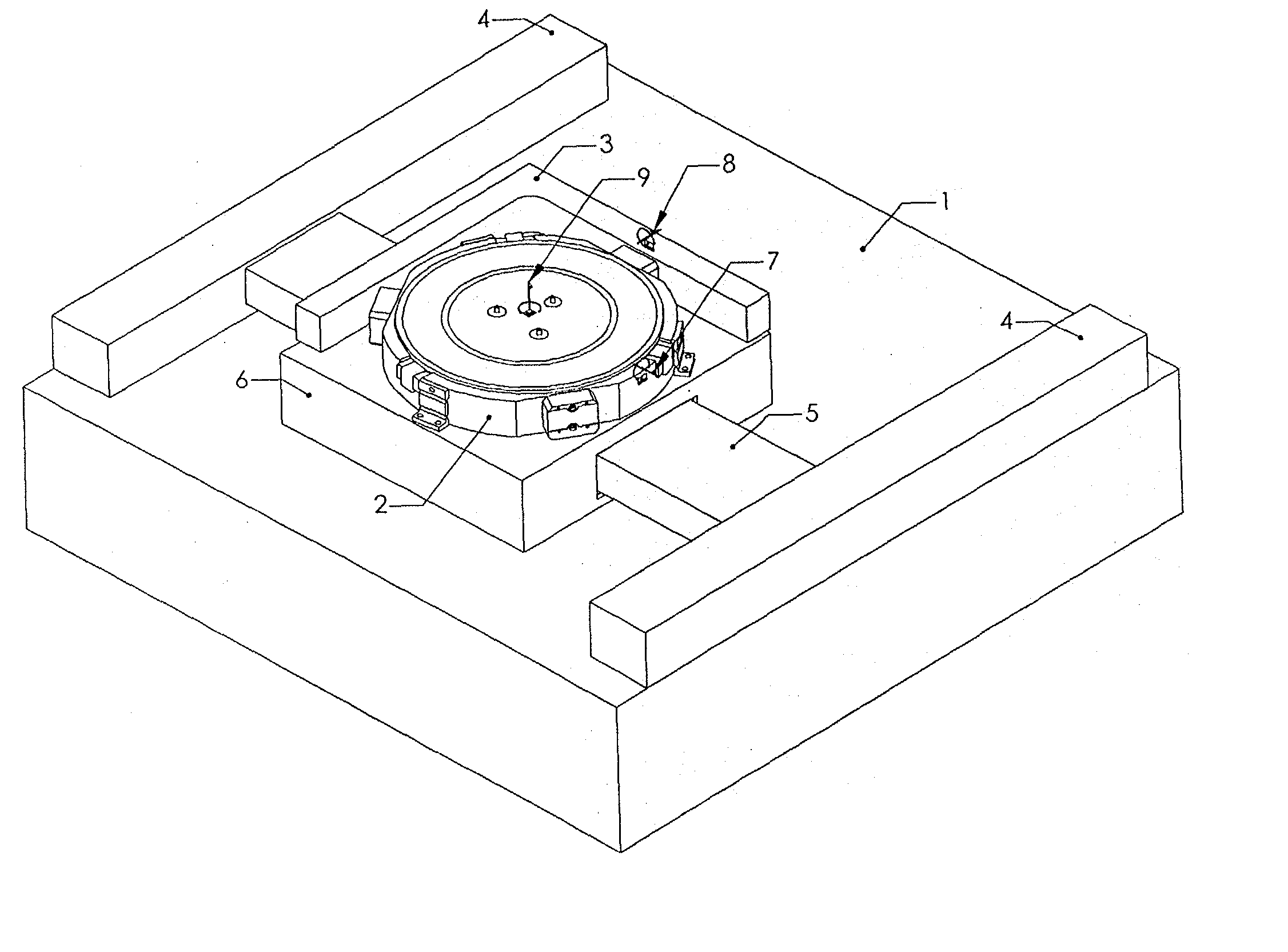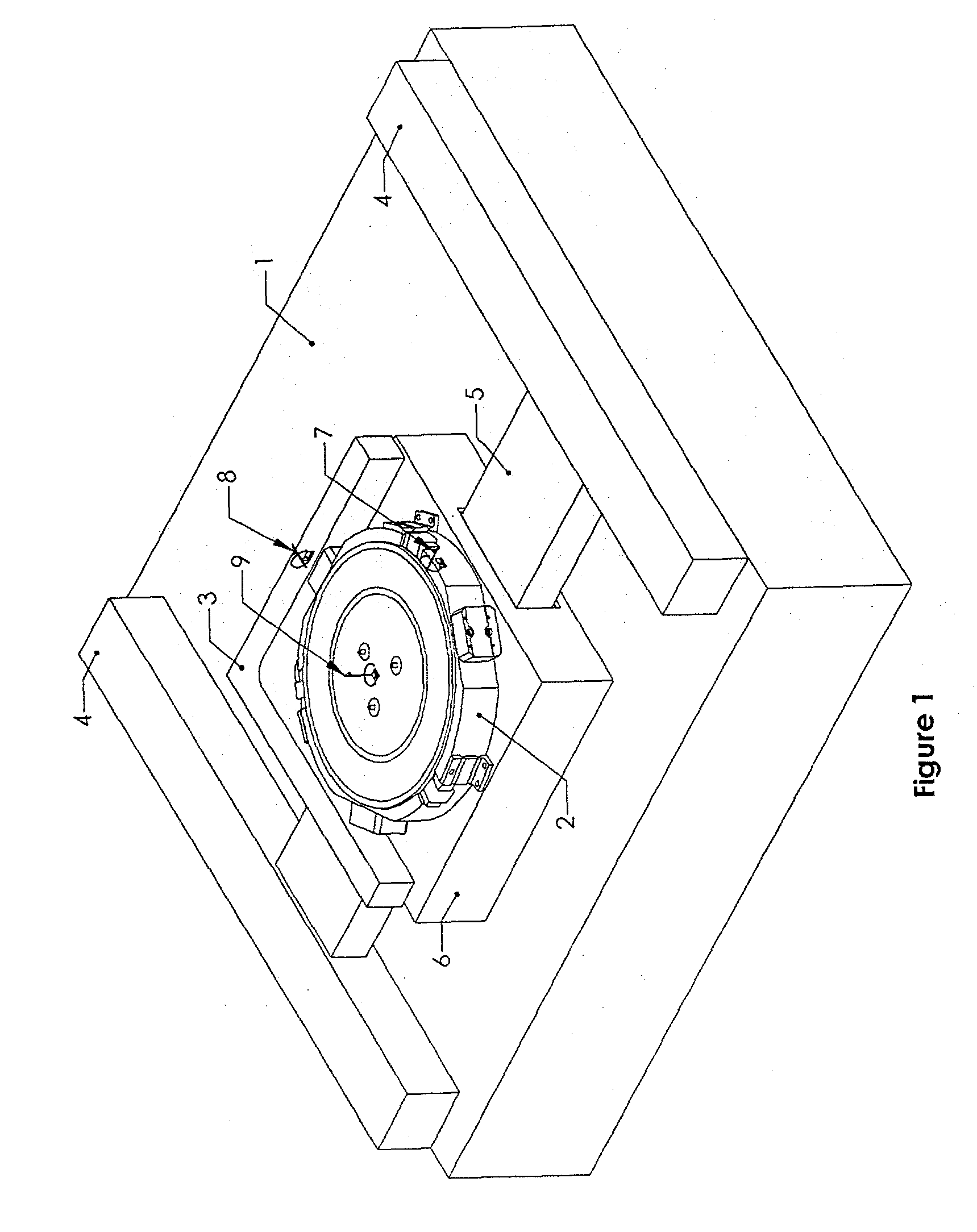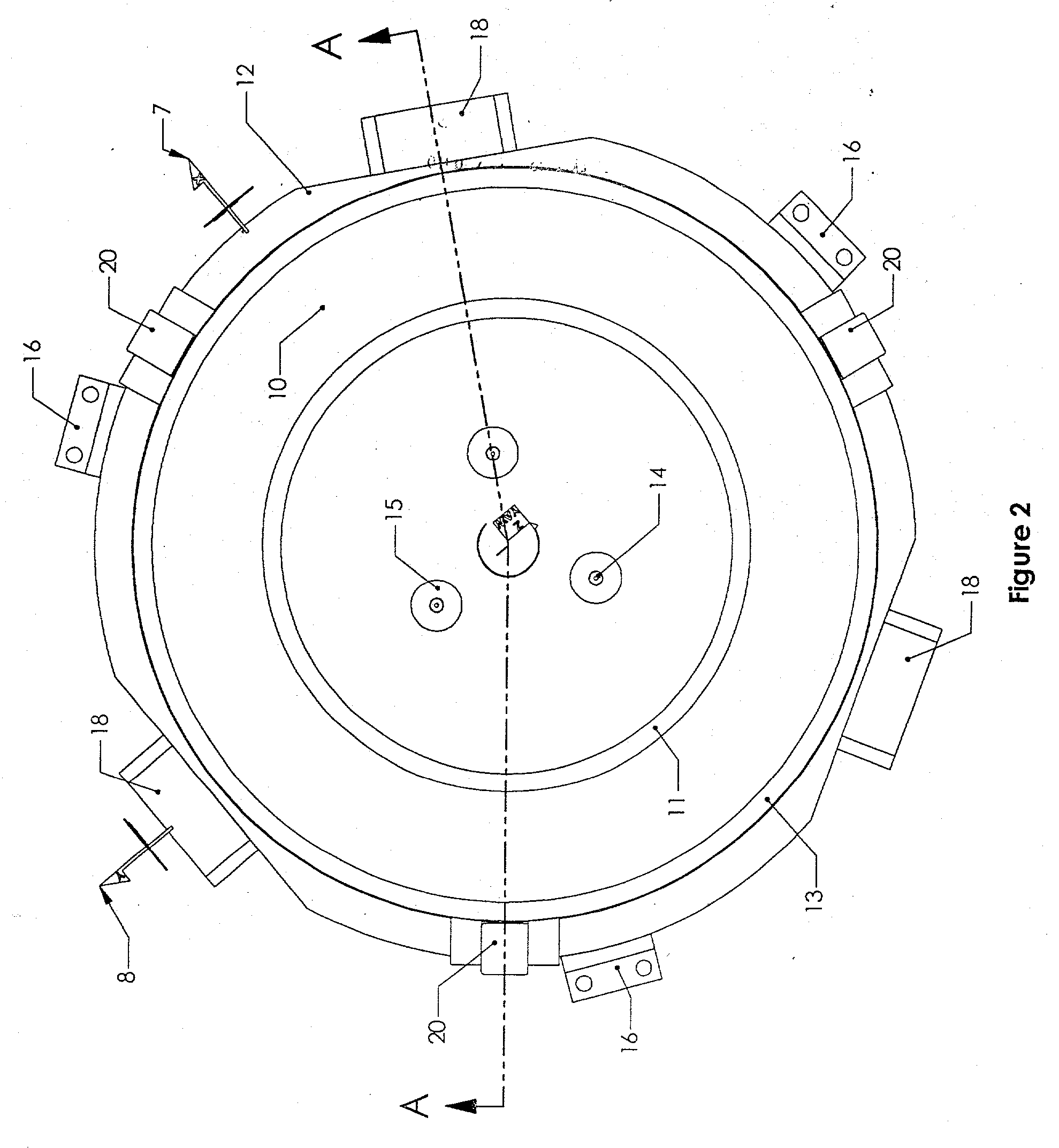On the other hand, the strain placed upon the chuck by the flattening action of the vacuum may result in warpage of the chuck surface, and consequent loss of planarity of the
wafer or substrate.
However, increasing the
mass of the chuck results in increased force necessary to move the chuck, and consequently increases stage
mass and
motor power levels.
Mechanical approaches to a wafer chuck become more difficult as the
mass of the chuck increases and the precision requirements become more severe.
Thus, as the chuck mass increases and the bearing mass increases, the size of the
actuator and the
actuator power must also increase, resulting in increased power dissipation and local heating of the wafer.
Heating of the wafer may be a problem because expansion of the wafer results in a shifting of the location of different parts of the wafer, and thus loss of precision and
repeatability.
The different coefficients of
thermal expansion of the aluminum (or other material) chuck and the semiconductor wafer may also result in mismatched stress between the chuck and the wafer, and may result in wafer warpage.
Thus, power dissipation in the actuators of the chuck may lead to thermal gradients and corresponding changes in the mechanical dimensions of the chuck mechanism, which may be another major impediment to achieving the levels of precision required in many semiconductor processes,
liquid crystal display processes, thin film magnetic head processes, and micro-
machining processes.
While these devices provide large forces with negligible
heat generation, they are unable to provide sufficient
range of motion to allow wafer transfers between a transfer
robot and the chuck.
Contact with the front surface of the wafer may result in physical damage such as
scratching, and may also result in
contamination of the devices on the front surface.
This additional requirement of piezo actuators increases the cost, complexity, and the mass of the stage.
Another problem with mechanical methods of moving a wafer chuck around, such as the piezo actuators, is that the physical contact of the piezo actuators with the chuck may represent another source of stress and strain, and therefore cause deformation of the chuck and resulting loss of precision.
As noted before, certain manufacturing processes, such as
semiconductor device manufacture,
liquid crystal display manufacture, and thin film magnetic head manufacture, require extreme flatness in the manufactured device, and consequently extreme flatness in the chuck.
Since the power dissipation increases with the square of the total stage mass, a small increase in mass may result in a large increase in
power consumption.
The heat dissipated by the stage influences the stage
accuracy and precision due to thermal disturbance of the air inside a tool, since the thermal gradients disrupt the precision of the distance measuring
laser interferometers that are typically used to measure the location of the stage.
Changes in heat dissipation also affect the precision of the interferometer, and thus the
repeatability of the operation.
However it has been previously noted that it is difficult to have high precision and large motion simultaneously.
This causes increased time, cost, size and heat dissipation of the stage.
A well known problem with
fluid control systems is the level of
noise that is often injected in to the pressure chamber due to turbulence in the
servo valve.
The turbulence in the fluid creates minute pressure disturbances that may be apparent as a source of
noise making nanometer-level of precision difficult to achieve.
 Login to View More
Login to View More  Login to View More
Login to View More 


